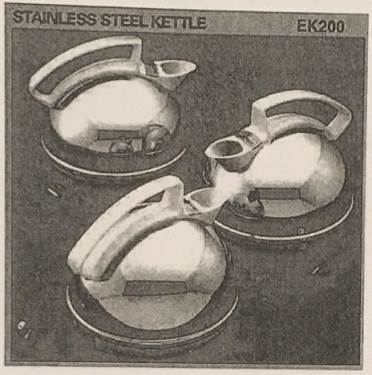Reference no: EM132788344 , Length: 1499 Words
Sustainability Engineering Assignment Questions -
Question 1 - Refrigerator Recycling
Please note: For this question you need to refer to the USCAR/VRP rating scheme for part (d). Cite the reference.
Many countries have instituted laws for recycling home appliances. For example, Japan has instituted a Home Appliance Recycling Law. A representative refrigerator from Hungary has been taken for further investigation (see Table).
|
Materials in refrigerator body
|
Compressor
|
|
PUR foam
|
6.440 kg
|
cast iron
|
1.748 kg
|
|
Fe-sheets (Fe means iron)
|
8.996 kg
|
steel, machined
|
1.663 kg
|
|
Plastics
|
6.681 kg
|
steel-sheets
|
4.090 kg
|
|
Copper
|
2.310 kg
|
Cu, formed (Cu means copper)
|
0.593 kg
|
|
Aluminum
|
0.990 kg
|
Cu, windings
|
1.300 kg
|
|
Glass
|
0.800 kg
|
subtotal
|
9.394 kg
|
|
Miscellaneous
|
1.970 kg
|
|
|
|
subtotal
|
28.187 kg
|
total
|
37.581 kg
|
|
Table - Material composition of an average refrigerator
|
a) Why do many countries and States have laws mandating the recycling of refrigerators?
b) Assume that you have to design a completely automated recycling process. How would you separate the refrigerator's materials in a completely automated fashion without human disassembly? Focus on the groups given in the above table only.
c) Discuss the pros and cons of using human manual disassembly in this case.
d) What is the refrigerators current and technical feasible recyclability (by weight) using the USCAR/VRP rating scheme? Assume that it is technically feasible to separate the materials. Explain your assumptions and reasoning.
e) Give 10 general Design for Recycling Guidelines and discuss whether they increase or decrease product manufacture cost
f) Give pros and cons for remanufacturing refrigerators.
Question 2 - Kettle Redesigns
Many of you make coffee or tea at home, or boil water for some other purpose. Kettles (see figure below) are used to boil water for all purposes.

a) Carefully consider how kettles are used and where energy losses occur. Discuss technical options and their (potential) trade-offs for a kettle that is more energy efficient over its life.
b) If we are not limited to using a kettle, discuss other options for getting boiling hot water in a more energy efficient manner.